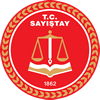Planning and Execution of Audit

The public entities to be audited are determined with the annual audit program. In the annual audit program, public entities to be audited, audit topics, types of audits to be conducted, ongoing audits and audit activities planned to be finalized within that year are indicated.
The annual audit program is prepared by the Board of Audit, Planning and Coordination in line with the risk analyses carried out by the relevant Audit Support Group in consideration of the expectations of the Turkish Grand National Assembly, general public and auditees as well as the views and opinions of audit groups and chambers delivering opinion on the reports.
The audit process consists of the following phases:
- Planning of the audit,
- Preparing and implementing the audit program,
- Submitting reports to the Turkish Grand National Assembly and/or relevant public entity,
- Monitoring of the reports.
In the conduct of the audit, first activity environment, information system, internal control system and accounting system of the entity are understood.
The materiality criteria are determined to identify which errors or mistakes affect the accuracy and reliability of financial statements and reports.
Accounts and transactions that have similar characteristics, are treated similarly, contain similar structural risks and are subject to similar controls are determined as account areas.
Audit evidence is collected through the assessment of structural risks and control risks and the identification of documents to be examined via statistical sampling method when needed.
International Standards of Auditing developed by INTOSAI require the implementation of the quality control system during and after the audit work.
Audits are assessed by the team leader and head of group during the execution of the audit while draft reports are evaluated by the report evaluation commissions consisting of three principal auditors in accordance with the relevant laws and standards as well as other legislative instruments based on these.
Audit reports that also contain the responses of the public entities are discussed first in the Trial Chamber responsible for the transactions of the public entity in question and then in the Board of Report Evaluation within the framework of the ISSAI provisions related to the post-audit quality control as well as the provisions of other relevant legislation.
The Board of Report Evaluation consists of eleven members including the Deputy President responsible for audit, two chairmen of chamber and one member from each chamber.
The audit team finalizes the report in consideration of the views of the trial chamber and the Board of Report Evaluation and the audit report becomes the TCA report.
